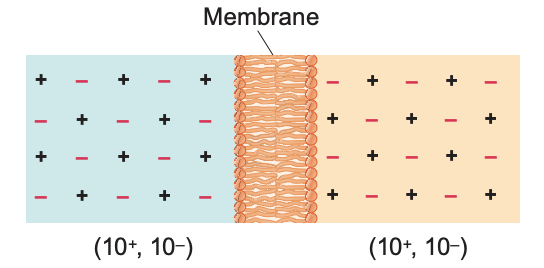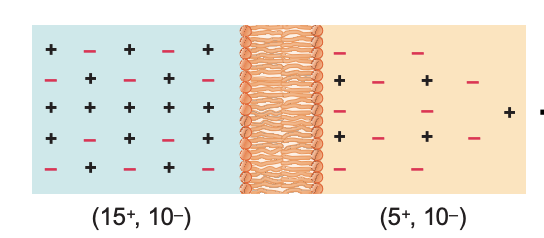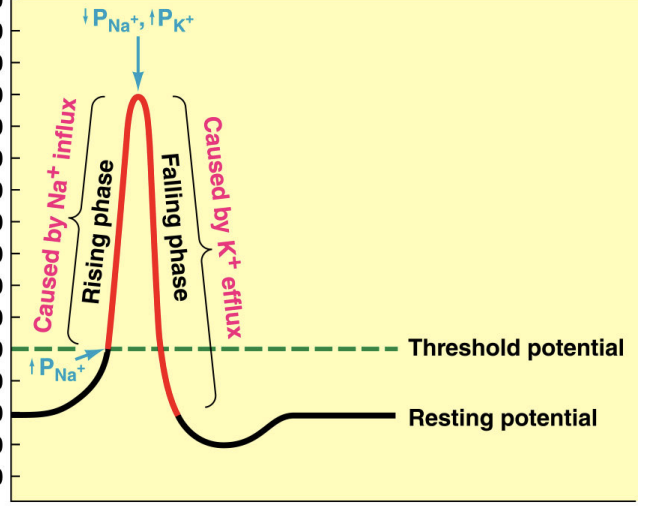npb101 exam 2
1/95
There's no tags or description
Looks like no tags are added yet.
Name | Mastery | Learn | Test | Matching | Spaced |
|---|
No study sessions yet.
96 Terms
homeostasis
maintaining a relatively stable internal environment
cell communication: direct
gap junction, transient direct linkup of cell’s surface markers
cell communication: indirect
paracrine, neurotransmitter secretion, hormone selection and neurohormone secretion
endocrine signaling
acts via hormones and neurohormones secreted into the blood to control processes that rely on duration rather than speed
nervous system vs endocrine system
nervous (neurotransmitters across synpatic cleft)
fast response
short duration
short distance
“wired”
endocrine (hormones secreted into blood)
longer response time
longer duration
long distance
“non wired”
what are the roles of the autonomic nervous system
plays a critical role in maintaining homeostasis
is a complex network of cells that controls the body’s internal state
regulates and supports many different internal processes, often outside of a person’s conscious awareness
involuntary control
how is the nervous system organized
central nervous system: brain and spinal cord
peripheral nervous system: nerve fibers
afferent and efferent divisions
enteric nervous system: nerve network of the digestive tract
Efferent Division of PNS (peripheral nervous system)
** remember that the efferent = exiting the brain
autonomic nervous system: fibers that innervate smooth muscle, cardiac muscle, and glands
sympathetic: division of the autonomic nervous system that prepares the body for strenuous physical activity
fight or flight
accelerates heart rate, goose bumps, sweating, raising blood pressure
ach → norepinephrin → apinephrine (ACNE)
parasympathetic: division of the autonomic nervous system that maintains resting functions of the internal organs
maintaining homeostasis
rest nad digest
ach → ach
autonomic nerve pathway
consists of a two-neuron chain
preganglionic fiber and postganglionic fiber
what is stress
generalized, nonspecific response of the body to any factor that overwhelms, or threatens to overwhelm, the body’s compensatory abilities to maintain homeostasis
what are the different kinds of stress
physical (trauma, surgery, intense heat/cold)
chemical (reduced O2 supply, acid-base imbalance)
physiologic (heavy exercise, hemmorrhagic shock, pain)
infectious (bacterial)
psychological or emotional (anxiety, fear)
social (personal conflicts, change in lifestyle)
what occurs when there is the presence of a stressor?
stressor is sensed
hypothalamus sends a signal to the pituitary gland (which controls most of the endocrine glands)
adrenaline is released
*stress activates sympathetic neurons of the Hypothalamus. HPA axis releases cortisol which resists stress
diffusion
the process of movement of molecules under a concentration gradient
net movement
due to random collisons between molecules
diffusion occurs…
down a concentration gradient
what affects rate of diffusion (and how so)
magnitude of the concentration gradient
larger magnitude increases rate of diffusion
permeability of the membrane
higher permeability = higher rate
surface area of the membrane
higher surface area = higher rate
molecular weight
higher molecular weight - lower rate
distance (thickness) over which diffusion takes place
higher distance = lower rate
** mp smd
what are the two different kinds of diffusion
concentration (chemical)
electrical
nonpolar molecules
O2, CO2, fatty acids
concentration/chemical gradient
specific small ions
(Na+, K+, Ca2+, Cl-)
electrical gradient + concentration gradient = electrochemical gradient
concentration/chemical gradient
high to low concentration
electrical gradient
electrostatic force caused by the separation of electrical charge
electrochemical gradient
the combined force of concentration and electrical gradients
what are nerve cells specialized for
electrical signaling over long distances
membrane potential
separation of opposite charges across the plasma membrane
** the greater the separation of charges across the membrane, the larger the potential
higher membrane potential = ?
higher separation of charges across the membrane
equilibrum potential for K+
-90 mV
K+ moves outside the cell (concentration gradient)
the outside becomes more positive
electrical gradient tends to move K+ into cell
electrical and concentration gradient balance each other out
no further net movement of K+ occurs (-90mV)
eq potential for Na+
+60mV
Na+ tends to move inside the cell
inside the cell becomes more positve
electrical gradient tends to move Na+ out the cell
electrical gradient counterbalances concentration gradient
no further movement of Na+ occurs
resting membrane potential (what happens)
-70 mV
K+ high in ICF and Na+ high in ecf
K+ drives equilibrium potential for K+ (-90 mV)
Na+ drives equilbrium potential for Na+ (+60mV)
membrane is 20-30 times more permeable to K than to Na+
the large net diffusion of K+ and the small net diffusion of Na+ neutralizes some of the potential created by K+
the cell’s membrane potential (-90mV) is reduced
= -70mV
what do leak channels do?
permit ions to diffuse down concentration gradients
Na/K ATPase
maintains Na+ higher concentration outside of the cell and K+ higher INSIDE tthe cell
pumps 3 Na+ out of the cell for every 2 K+ pumped into the cell
when is mV 0?
equal positives and negatives on both sides

is there membrane potential here? why?
no, it would be 0mV.
no separation of charges
equal - and + on both sides of the membrane

is there membrane potential here? why?
yes, there is membrane potential because the left side is more positive and will move to the right side
charge separation across a membrane
most of the fluid is electrically neutral, but separated charges will form a layer along the plasma membrane (all positives form a layer on one side, all negatives form layer on one side.)

which has the most membrane potential?
C: there is a greater separation of charges across the membrane and thus a larger potential
how does the cell create charge separation?
establishes and maintains concentration gradients for key ions (Na+, K+)
ions will diffuse through the membrane down their concentration gradients
diffusion through the membrane results in charge separation, which creates a membrane potential (electrical gradient)
net diffusion continues until all the force exerted by the electrical gradient exactly balances the forces exerted by the concentration gradient
the potential that would exist at this equilibrium is the equilibrium potential
how do K+ and Na+ penetrate the cell membrane?
leak channels
Na+ is higher ___ of the cell and K+ is higher ___ of the cell. Why?
Na+: higher outside
K+: higher inside
na/k atp ase: establishes and maintains concentration gradients by pumping 3 na+ outside of the cell for every 2 k+ inside the cell
NOKI
what are K+ and Na+ eq potentials at resting potential
they are NOT at their equilibrium potentials
concentration gradients and permeabilities for Na+ and K+ remain constant in resting state
resting membrane potential established by these forces remain constant
why is the resting potential for a cell less than the K+ equilibrium potential?
at resting membrane potential, membrane permeability K+ > Na+
what would happen to a cell’s membrane potential if the cell was deprived of ATP
Na/K+ atpase is not functional, there is no membrane potential
depolarization
change in membrane potential to more positive values than resting membrane potential
hyperpolarization
change in membrane polarization to more negative values than resting membrane potential
graded potential
all the potential BEFORE it hits the threshold
can be low or high depending on the stimulus
repolarization
returning to resting membrane potential after depolarization
action potential
brief all or nothing in membrane potential, lasting on the order of 1 millisecond
borught about by rapid changes in membrane permeability to Na+ and K+ ions
Na+ IN (rise)
K+ OUT (fall)
voltage-gated Na+ channel
opens quickly in response to depolarization (becoming more positive), allowing K+ ions to flow out of the cell down their electrochemical gradient into the cell
rising phase
voltage-gated K+ channel
opens more slowly in response to depolarization allowing K+ ions to flow out of the cell down their electrochemical gradient
falling phase and after hyperpolarization

What are the channel states Na+ has?
open
close
inactivated
events underlying the rising phase of the action potential
@ threshold, Na+ activation gate opens, meaning the permeability of Na+ rises
after threshold, Na+ enters the cell and this causes the rising phase
what are K+ channel states
open
close
falling phase
K+ channels open, but Na+ INACTIVATE GATE CLOSES (INACTIVE — STOPS FLOW OF NA+)
K+ leaves cell
@ resting potential:
Na+ activation gate closes and inactivation gate opens
K+ leaves the cell due to the still open K+ channel
K+ activation gate closes, and membrane returns to resting potential
components of neurons
soma (cell body)
nucleus
dendrite
axon hillock
axon
axon terminals
dendrite
input zone, receives incoming signal
axon hillock
trigger zone, initiating action potential
axon terminals
output zone: releases neurotransmitter
action potential propagation
locally generated depolarization current spreads to adjacent regions of the membrane, causing it to depolarize
action potentials:
once initiated, action potentials are conducted throughout a nerve fiber
contiguous conduction
propagation of action potentials in unmyelinated fibers by spread of locally generated depolarizing current to adjacent regions of membranes, causing it to depolarize
non-myelinated action potential propagation
keeps going forward until it reaches the end of the axon, but it happens slowly
active area → action potential happens at that point = depolariztes
channels behind it are inactivated so action potential cannot occur behind it (no backflow)
absolute refractory peroid
a brief period during a spike:
repolarization: voltage gated Na+ channel inactivation gate closes: a second spike cannot be generated
refractory: repolarization (going down)
relative refractory period
a brief period following a spike
below resting membrane potential, the voltage gated na+ channel inactivation gate opens
capable of opening in response to depolarization
hyperpolarization: a higher intensity stimulus is needed
what is the function of the refractory period
prevents “backward” current flow
action potential cannot be initiated
limits frequency
saltatory conduction
propagation of action potentials in myelinated axons by jumping from node to node
(much faster)
myelin
multilayered sheath of plasma membrane made from specialized glial cells that wraps around axonal fibers and acts as an insulator to the flow of current
insulator
nodes of ranvier
gaps in myelin insulation containing high densities of voltage gated na+ k+ channels
schwann cells
myelin forming glial cells in the PERIPHERAL SYSTEM
swan → periperaoligo
oligodendrocytes
myelin-forming glial cells in the central nervous system
multiple sclerosis
the body’s defense system attacks the myelin sheath
slow transmission of impulse in the affected neurons
graded potential
local changes in membrane potential
occur in varying grades or degrees of magnitude or strength (depending on stimulys)
spread by PASSIVE current flow
die out over short distances
Graded potential vs action potential
Graded:
depends on stimulus
decreases with distance
triggered by stimulus (neurotransmitter-post-synaptic cells/sensory receptor in sensory neurons)
dendrites, cell body, sensory receptors
uses ion channels (ligand-gated, mechanically gated channels)
can travel on both sides
action
all or none
propagates over entire cell
triggered by threshold
axon
voltage-gated channels
synapse
junction between two neurons (or between neuron and a muscle or gland) that enables one cell to electrically and/or biochemically influence another cell
electrical synapses
neurons connected directly by gap junctions
the gap junctions are made up of multiple proteins called connexins
small diameter of the tunnel in a gap junction allows water-soluble ions to pass between cells but blocks larger molecules
chemical synapses
chemical neurotransmitter transmits the information one way across a space separating the two neurons
most synapses in the human nervous system are __ synapses
chemical synapses
convergence
the synaptic input of many neurons onto one neuron
divergence
the synaptic input of one neuron onto many neurons
synaptic transmission (what is it)
the primary means of rapid inter-neuronal communication in the brain
synaptic transmission steps
action potential propagation in the presynaptic neuron
Ca++ entry into the terminal button
release of neurotransmitter from presynaptic neuron
binding of neurotransmitter to receptor on postsynaptic neuron
channel opens on postsynaptic neuron and causes EPSP/IPSP
summation occurs
action potential
IPSP
inhibitory postsynaptic potential
GABA, Gly
Hyperpolarization potential that brings Vm away from the threshold for the generation of an action potential
EPSP
excitatory postsynaptic potential
ACh, Glutamate
Depolarization that brings Vmtowards the threshold for a Generation of an action potential
Summations
Temporal: additive effect of PSP’s occurring at the same place and time
spatial summation: additive effect of PSP’s occurring on the same cell but nearby parts
cancellation summation: ESPSs and IPSPs cancelling each other out
Presynaptic inhibition: synaptic inhibition of a synaptic terminal causing a decrease in transmitter release
neurotransmitter removal
degradation: enzymatic breakdown (AChE)
Transport: active transport back into the presynaptic cell “reuptake”
Diffusion: the transmitter simply diffuses away
Central VS Peripheral Nervous System (what they consist of, and function)
CNS (brain and spinal cord)
integration and processing signals
PNS (all nerves extending from CNS)
communicating and relaying signals from the CNS to the rest of the the body
PNS Organization
Afferent Division
relay visceral and sensory stimuli to the brain
Efferent Division
Autonomic:
involuntary functions
two neuron pathway
sympathetic and parasympathetic
somatic
voluntary movement of skeletal muscles (single neuron)
Protection of the Brain
Cranium and Vertebral Column
Meninges
Cerebrospinal fluid
Blood brain barrier
meninges
3 different Meningal membranes wrap, protect, and nourish the CNS
Dura matter
Arachnoid Matter
Pia Matter
gentle
cerebospinal fluid
surrounds and cushions the brain and spinal cord
blood brain barrier
highly selective
regulates exchanges between the blood and the brain
shields from harmful changes (viruses)